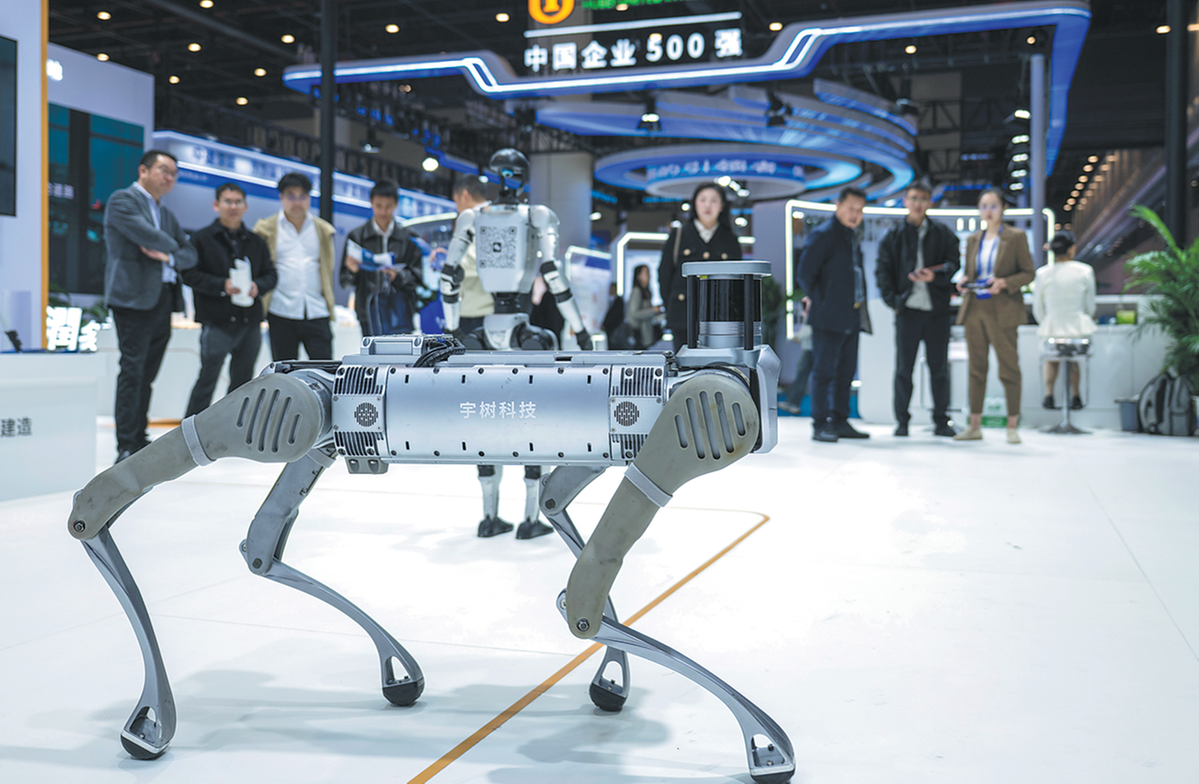Innovations gather steam to turbocharge future growth
Smart tech fostering emergence of new quality productive forces


BEIJING — Shifting from the "world factory" to a tech innovation hub, China is accelerating the development of new quality productive forces to forge a new growth path amid a more complex global landscape.
The world's second-largest economy has recently unveiled a pivotal document outlining priorities for its 15th Five-Year Plan (2026-30), which emphasizes "achieving greater self-reliance and strength in science and technology" and "steering the development of new quality productive forces" as key objectives for the next five years.
As a pillar of China's high-quality development, the cultivation of new quality productive forces tailored to local conditions has made notable strides in recent years and is expected to play an even more pivotal role in supporting growth in the near future.
Under bright white lights, an automated production line hums softly as robotic arms lift, pivot and place miniature components with precision. Autonomous carts glide seamlessly between workstations, transporting trays of parts without pause. In an adjacent control room, a small team of technicians monitors dashboards that integrate real-time data.
This scene plays out daily at Dongguan Moldbao Smart Technology Co, a mold manufacturer in Dongguan, South China's Guangdong province. Founded in 2016, the company has been an early pioneer in China's smart-manufacturing drive, launching multiple automated mold production lines capable of running round the clock.
"Molds are known as the 'mother of industry' and are used across many sectors, but producing them demands high consistency and precision," said Wang Sheng, vice-president of the company. "To ensure that, we rely on data, which are more stable than humans."
Doubling down on technology upgrades, the company has digitized and automated every step of production, Wang said, from design and programming to manufacturing and logistics. With the resulting efficiency gains, the company has shortened its mold production cycle by about 30 percent.
Across China, traditional industries are undergoing a technology-driven transformation to raise productivity and open new paths for growth.
In Northeast China's Liaoning province, a traditional heavy-industry base, intelligent and green upgrades are transforming legacy sectors, offering a clear path to shed its rust-belt image. For example, Ansteel, a major provincial steelmaker, has deployed an intelligent system to optimize molten steel handling, reducing production costs by 15 percent and cutting wastewater discharge by 21 percent.
Speaking about this national trend, Lyu Peng, a researcher with the Chinese Academy of Social Sciences, said it exemplifies the development of new quality productive forces, which span both cutting-edge and traditional industries. "New quality productive forces are not limited to strategic emerging or future industries," Lyu added. "With transformation and upgrading, traditional sectors can become them as well."
Numerous companies across the country are accelerating their digital transformation efforts. According to the China Internet Development Report 2024, the country now has nearly 10,000 digitalized workshops and intelligent factories. Of these, more than 400 have been recognized as national-level benchmark factories in smart manufacturing, utilizing technologies such as AI and digital twins.
Using advanced technologies such as information technology, artificial intelligence, big data and the internet of things, new quality productive forces reorganize and optimize traditional factors of production, reshaping how manufacturing is run and managed, said Zhu Qigui, deputy director of the China Academy of Financial Research.
Zhu noted that these forces will influence technological renewal, production efficiency and industrial structure. "Chinese manufacturers must strengthen innovation, optimize industrial structure, and improve product quality and added value to achieve high-quality development and stand out in global competition," he said.
According to the recommendations from the Central Committee of the Communist Party of China for the new five-year blueprint, the country will strengthen self-reliance in science and technology and guide the development of new quality productive forces. "Innovation" is a recurring theme, with priorities including raising innovation capacity across the board and advancing original innovation.
Xinhua



































